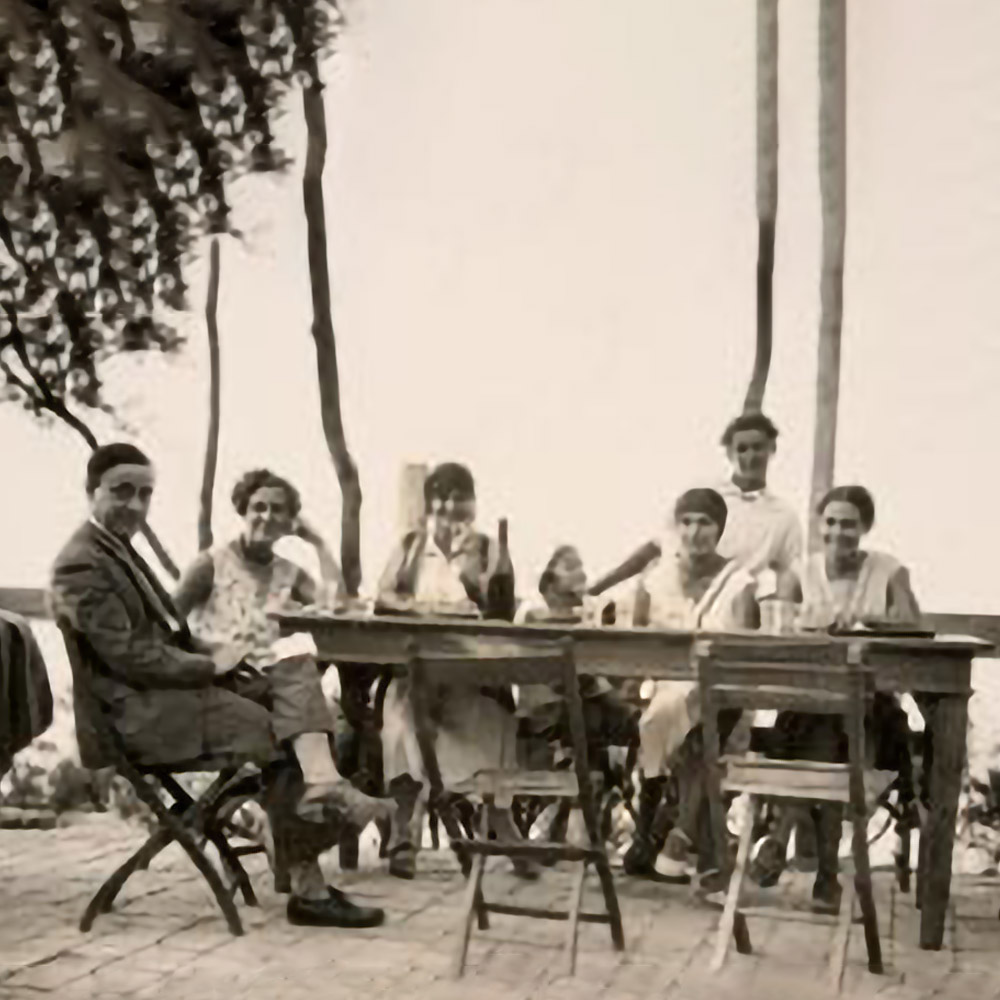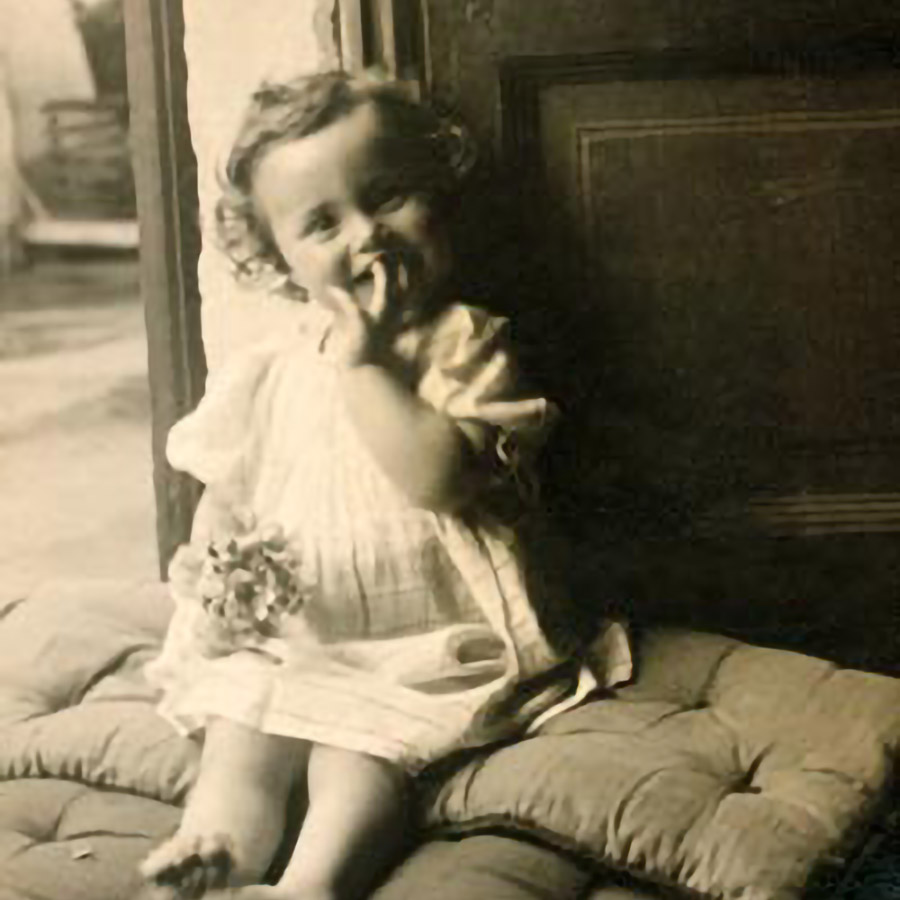Family album n.1
The photos which follow in this photograph album
of people belong to a period in which I was yet to be born, except for the last which is dated 1939. There I was a child of eight years old. I was pretending to lick ice cream from a cone which was empty. I was together with my sister Maria, my cousin Rita and our aunt Marieda, the director of the comic performance. We were on the beach at Riccione, on the sand, sitting on a pedal boat. An aunt who would get up to all sorts of things. Happy times. A photograph album: many faces and many faded figures, distant and blurred, but which emerge perfectly in my memorywith their faces and their features. They are the many members of my family seen as young people whom I knew later when they were grown up or old; my family before my family, the value and importance of our forebears.
To look back then at the stories and the anecdotes of that past is something that I rarely do. It is too romantic an exercise for me and also a little painful. And yet I am the fruit of these things and the photographs of this album represent the ghosts of lives, records of joys, sorrows, cultures and customs. Looked at by an outside observer, all these people, a bit ‘liberty’, a bit art deco and a bit rationalist in their clothes and hairstyles, become records of the period in their still and final poses. The early thirties of the last century: First World War, Fascism and Antifascism, popular songs, Milan and its so very diligent bourgeoisie. Cesare, Mariuccia, Antonio, Lisetta, Vincenzo, Fulvia, Zizzetta, Marco, Agostino, grandma Mariettina.
It was Grandpa Chicchì (Francesco Di Stefano) who wanted and built the small apartment house in Via Giorgio Jan in 1930 for himself and for each of his children. Then husbands arrived for his daughters, including an engineer from Novara, Antonio Boschi, for Marieda, and a lawyer from Verona, Vincenzo Mendini, for Fulvia (my mother). They played out lives which intertwined in the family before I and the apartment house existed and then also with me in it. Cousins, uncles and aunts, brothers, sons-in-law, daughters-in-law, friends, lawyers, engineers, chemists, etc. I was born in Via Jan in 1931.


Grandfather Francesco had commissioned Piero Portaluppi to design the house and you can see the deep understanding that lay between these two from the care that went into the design when they invented this admirable dwelling, one of the most refined by this architect. Portaluppi called it a “villa” and it was clearly inspired by the Vienna Secession and by Alpine architecture. In that period Via Jan was in a meadow outside the city and the house stood isolated alone, a little metaphysical. It was grandfather Francesco who started a collection of paintings in it, with some remarkable works by Tosi, Ubaldo Oppi, Funi (Il marinaio), Sironi (I costruttori), Casorati (Una fanciulla). It was therefore he who first introduced uncle Antonio and Aunt Marieda to artists and to infect them with his own contagion. At that time uncle Antonio Boschi had not yet become a senior manager at Pirelli and the untiring producer of “rubber-iron” patented inventions that he was later to become. He was a young university graduate who, fully aided and abetted by his wife, made every possible sacrifice in order to be able to visit galleries like that of Milione and to bring home a small Carrà or a little statue by Arturo Martini. Marieda extrovert, attractive, generous, fashionable, elegant and creative was the epitome of seduction, even with the most difficult painters, like Morandi or Savinio for example. It was a protected and protective world, a bit like a dream and a bit like a nightmare for me as a little boy, where the pleasure of human understanding, of discovery and of historical records and of the ability to choose and make contacts reigned. The doors of all our apartments were usually open and the stairway was like a common living room. We nephews and nieces lived in those same rooms that were also a little kitsch, too crammed full even with cats and chinoiserie. That atmosphere was our place and we played between the legs of the Beckstein. There were little step ladders, nails and a hammer at home and positioning a new painting on the wall often meant that my uncle spent entire nights making changes to the interminable puzzle of an entire wall, gaining a few centimetres frame by frame. Marieda, a lover and sculptress of pottery, and Antonio, master violinist and commander of airships, had no children in their long and happy marriage. The events and destinies of long years and subsequent generations then came to change many things, and each of the figures in these photos created and lived through their own personal stories. The Second World War and the evacuation, the cold, the fear, the partisans, the flight to the country with the collection taken too, belong to the next two photograph albums, which are in the pipe-line.
Alessandro Mendini
